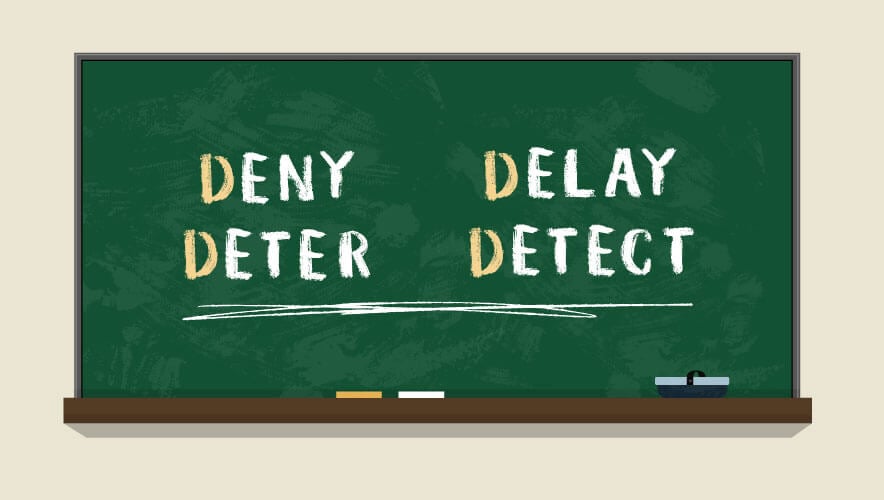Editor’s Note: The Hidden Potential of Collaborative Teams
The world is facing big problems. As the urgency of the global pandemic wanes, other crises rise to endanger the well-being of communities across the world. While big problems require big solutions, getting humans to cooperate, collaborate, and move things forward is an ongoing challenge.
Adam Grant has some ideas about how to address this issue. In his latest book, Hidden Potential: The Science of Achieving Greater Things, Grant discusses how people can come together, work together successfully, and produce results that matter.
Doing this requires rethinking how groups work and how people work inside those groups. “Maximizing group intelligence is about more than enlisting individual experts—and it involves more than merely bringing people together to solve a problem,” writes Grant.
As an example, Grant cites the work of Richard Hackman, one of the world’s leading experts on teams. After the terrorist attacks on 11 September 2001, Hackman felt he had failed. Grant recounts that “Richard had been studying how to improve collaboration within the major U.S. intelligence agencies. He told us that although analysts had tried to sound the alarm about the threat of airplanes being hijacked as weapons, the intelligence community had failed to heed their warnings. If his research had produced the needed results sooner, they might have been able to prevent the 9/11 attacks.”
With his colleague, Anita Woolley, Hackman set out to find out what made teams successful. They found that the best teams were not comprised of experts on the issue at hand, nor were they built with the smartest individuals. “Surprisingly, certain groups consistently excelled, regardless of the type of task they were doing. No matter what kind of challenge [Woolley] and her colleagues threw at them, they managed to outperform the others.” The key indicators of success include prosocial behavior, the right goal, and the best leadership.
Prosocial Behavior
The study found that “collective intelligence depends less on people’s cognitive skills than their prosocial skills. The best teams have the most team players—people who excel at collaborating with others.”
Prosocial behavior emphasizes altruism, helping others, and consensus building. “When they have prosocial skills, team members are able to bring out the best in each other,” writes Grant. “Collective intelligence rises as team members recognize one another’s strengths, develop strategies for leveraging them, and motivate one another to align their efforts in pursuit of a shared purpose. Unleashing hidden potential is about more than having the best pieces—it’s about having the best glue.”
The Right Goal
However, prosocial skills alone don’t do the trick. Even putting the right people in a group doesn’t automatically make them a team. Research shows that the best teams were evaluated on a collective effort.
“They aligned around a common goal and carved out a unique role for each member,” Grant writes. “They knew their results depended on everyone’s input, so they shared their knowledge and coached one another on a regular basis. That made it possible for them to become one big sponge—they were able to absorb, filter, and adapt to information as it emerged and evolved.”
Though it seems like a commonsense approach, Grant warns that the concept of teambuilding as camaraderie and bonding is overrated. “What really makes a difference is whether people recognize that they need one another to succeed on an important mission.”
Quality Leaders
According to Grant, leadership of teams is also a critical component for success. “When we select leaders, we don’t usually pick the person with the strongest leadership skills. We frequently choose the person who talks the most. It’s called the babble effect,” writes Grant. “Research shows that groups promote the people who command the most airtime—regardless of their aptitude and expertise. We mistake confidence for competence, certainty for credibility, and quantity for quality. We get stuck following the people who dominate the conversation instead of those who elevate it.”
A good example of a common goal that requires many voices is school security. ASIS International is developing a standard on school security. The standards development process involves hundreds of experts coalesced around the critical goal of making schools safer. To do this, the security community is working with experts on school administration as well as psychologists and counselors who work in a school environment. The standard will address physical protection of schools, school emergency operation planning, and behavioral threat assessment and management.
The standards development process itself addresses the babble effect and leads to high quality interaction. The standard is being developed under guidance issued by the American National Standards Institute (ANSI). The best practices required of developers such as ASIS include transparency, openness, balance, consideration of all views and objections, and a lack of dominance by any single interest category, individual or organization.
In this month’s content package on school security, experts weigh in on early intervention efforts that can help prevent school violence. Teams devoted to this effort would be wise to consider prosocial behavior in team members and in leaders, according to Grant.
“Collective intelligence is best served by a different kind of leader. The people to promote are the ones with the prosocial skills to put the mission above their ego—and team cohesion above personal glory,” he writes. “They know that the goal is not to be the smartest person in the room; it’s to make the entire room smarter.” And in the case of ASIS—and of the standard on school security—to make classrooms safer.
Teresa Anderson is editor-in-chief of Security Management. Connect with her on LinkedIn.

















